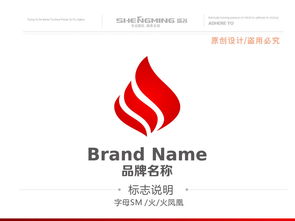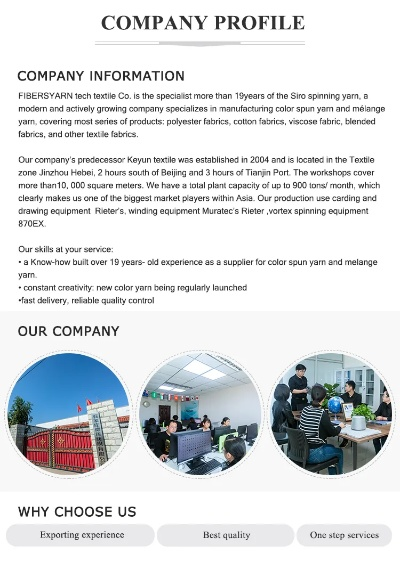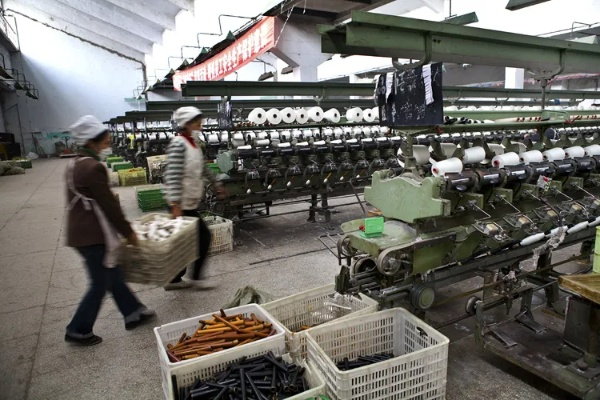The Role of a Textile Factory Security System:A Comprehensive Guide
: The Role of a Textile Factory Security System: A Comprehensive Guide,Abstract:,This paper aims to provide a comprehensive guide on the role of a textile factory security system. The textile industry is a crucial sector in many countries, and ensuring the safety and security of this industry is paramount. This paper will discuss the importance of a textile factory security system, its components, and how it can be implemented to enhance overall industrial safety. It will also highlight the benefits of having a robust security system in place, including improved employee safety, reduced theft and damage, and enhanced productivity. Finally, the paper will provide practical tips for implementing a successful textile factory security system.

Introduction: In the modern world, textile factories are essential contributors to the global economy, producing a wide range of fabrics and garments. However, with this increased production comes an increased risk of theft, vandalism, and other security threats. Therefore, it is crucial for these factories to have robust security systems in place to protect their assets and ensure the safety of their employees. In this guide, we will explore the various aspects of a textile factory's security system, including the importance of having a well-designed system, the different types of security measures, how to implement them, and some real-life examples of successful implementations.
Importance of a Well-Designed Security System: A well-designed security system is critical for any textile factory as it can prevent or minimize losses due to theft, damage, or even accidents. A well-designed system should be comprehensive, covering all areas of the factory, from storage areas to production lines, and from entry points to exits. It should also be flexible enough to adapt to changing circumstances and technological advancements. Additionally, a well-designed system should be cost-effective, efficient, and easy to maintain.
Types of Security Measures: There are several types of security measures that can be implemented in a textile factory, depending on its specific needs and risks. Some of the most common include:
-
Access Control: This involves restricting access to certain areas of the factory using keys, cards, or biometric identification methods. Access control helps prevent unauthorized personnel from entering sensitive areas and reduces the risk of theft or damage.
-
Surveillance Systems: These systems use cameras, motion sensors, and other monitoring technologies to track activity in the factory and detect potential threats. Surveillance systems can help identify suspicious behavior and alert security personnel to potential security breaches.
-
Alarm Systems: These systems use sensors and alarms to detect any unusual activity in the factory, such as break-ins or fires. Alarm systems can help alert authorities and personnel to emergencies quickly.
-
Locking Systems: These systems use locks and bolts to secure doors and windows in the factory, preventing unauthorized access. Locking systems can help prevent theft and damage caused by forced entry.
-
Employee Training: Providing regular training to employees on security protocols and procedures can help reduce the risk of theft and other security incidents. Employees should be trained on proper handling of equipment, safe storage practices, and emergency response procedures.
Implementation of Security Systems: Once a well-designed security system has been established, it is important to implement it effectively. Here are some steps to follow when implementing a security system:
-
Assessment: Conduct a thorough assessment of the factory's risks and vulnerabilities to determine which security measures are necessary. This assessment should consider factors such as the type of products being produced, the location of the factory, and any existing security measures already in place.
-
Planning: Based on the assessment, develop a detailed plan for implementing the security system. This plan should include the types of security measures to be used, their locations, and the personnel responsible for their implementation.
-
Implementation: Begin implementing the security measures according to the plan. This may involve installing new equipment, training staff, or modifying existing processes. Be sure to communicate the changes to all relevant parties, including employees, customers, and suppliers.
-
Monitoring and Evaluation: Regularly monitor the effectiveness of the security system and evaluate its performance. This can involve reviewing surveillance footage, conducting inspections, and collecting feedback from employees and customers. Use this information to make adjustments to the system as needed.
Real-Life Examples: One successful example of implementing a textile factory security system is the operation of a major clothing company in China. The company had faced increasing security threats, including theft and vandalism, which were affecting its reputation and profits. To address these issues, the company hired a security consultancy firm to assess its risks and develop a comprehensive security plan. The plan included installing advanced surveillance systems, implementing access control measures, and training all employees on security protocols. After implementing these measures, the company reported a significant reduction in security incidents and improved employee morale.
Conclusion: In conclusion, a well-designed security system is essential for protecting textile factories from theft, damage, and other security threats. By implementing effective security measures such as access control, surveillance systems, alarm systems, locking systems, and employee training, companies can minimize risks and ensure the safety of their assets and employees. It is important to regularly monitor and evaluate the effectiveness of the security system to make necessary adjustments as needed. With careful planning, implementation, and ongoing maintenance, textile factories can enjoy a secure environment while still meeting their production goals.
纺织厂保安制度概述
纺织厂作为生产高质量产品的关键场所,其保安制度的重要性不言而喻,本制度旨在确保工厂生产环境的安全与秩序,保障员工和财产安全,同时维护良好的社会治安环境。

保安职责与权限
保安职责:
a. 负责工厂日常安全巡查,确保工厂区域无安全隐患。 b. 对来访人员进行身份核实,确保其符合工厂规定。 c. 维护工厂秩序,防止盗窃、破坏等不良行为。 d. 应对突发事件,如火灾、盗窃等,迅速采取措施进行处置。 2. 保安权限:
a. 对进入工厂的人员进行登记和验证。 b. 对工厂内部设施进行安全检查,确保其正常运行。 c. 对工厂周边环境进行监控,确保无安全隐患。
保安人员管理
招聘与培训:
a. 招聘具备良好素质和专业技能的保安人员。 b. 对保安人员进行定期培训,包括安全知识、法律法规、应急处理等。 2. 考核与奖惩:
a. 对保安人员的日常工作表现进行考核,根据考核结果给予奖惩。 3. 保安团队建设:
a. 建立有效的沟通机制,确保保安人员之间的信息共享。 b. 组织定期团队建设活动,提高保安人员的团队协作能力。
安全防范措施
物理安全:
a. 设置监控系统,对工厂区域进行24小时监控。 b. 安装防盗网、门禁系统等设备,防止盗窃行为。 c. 定期检查消防设施,确保其正常运行。 2. 技术安全:
a. 使用智能门禁系统、视频监控系统等高科技设备,提高安全防范能力。 3. 人文关怀:
a. 为保安人员提供必要的休息和健康保障。 b. 建立员工心理健康支持体系,帮助员工解决心理问题。
案例分析
- 近期发生的盗窃事件分析:该案例表明,加强日常巡查和监控是防止盗窃的关键措施,保安人员需要定期巡查工厂区域,及时发现并处理安全隐患,对于来访人员进行身份核实时,需要严格把关,确保其符合工厂规定,对于突发事件,保安人员需要迅速采取措施进行处置,确保工厂生产环境的安全与秩序。
- 某纺织厂成功应对火灾事件分析:该纺织厂在火灾发生时,迅速启动应急预案,组织专业队伍进行灭火和救援,该厂加强了消防设施的维护和检查,确保其正常运行,该厂还加强了对员工的安全教育和培训,提高了员工的消防意识和自救能力,这些措施有效地降低了火灾风险,保障了工厂生产环境的稳定和安全。
总结与展望
本纺织厂保安制度旨在保障工厂生产环境的安全与秩序,保障员工和财产安全,该制度涵盖了保安职责与权限、保安人员管理、安全防范措施等方面,通过有效的保安措施和团队建设活动,该纺织厂已经取得了一定的成果和经验,该厂将继续加强保安工作,提高保安人员的素质和能力水平,加强安全防范措施的落实和执行力度,为工厂的生产和发展提供更加坚实的保障。
Articles related to the knowledge points of this article:
The Role of Textile Factory Womens Teachers
The Glitz and Glamour of Chinas Textile Mill Women
The Fabric of Work:A Glimpse into the Lives of Women Textile Workers



